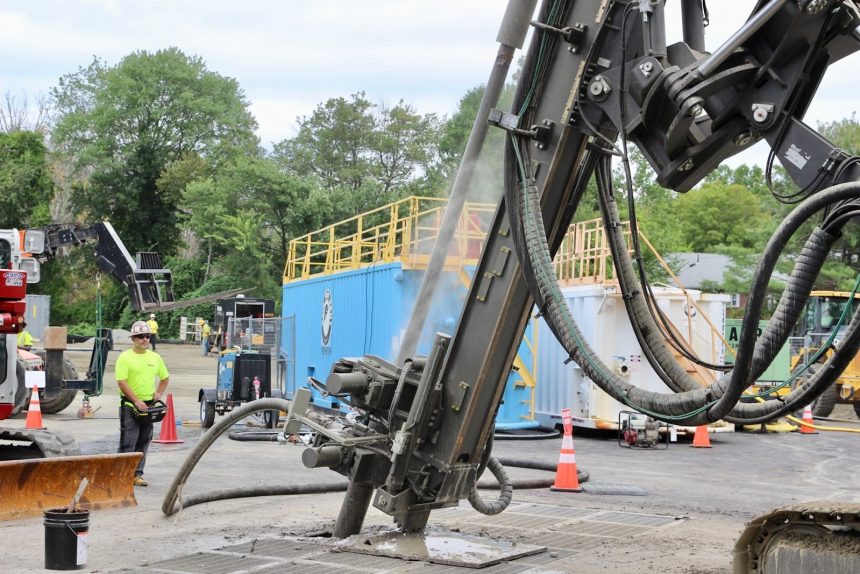Embedded beneath the surface along with earthworms, rocks, and the occasional skeleton is a massive battery waiting to be utilized. Unlike traditional batteries, this battery is stable, free to access, and perfect for sustainable exploitation: the Earth itself.
While temperatures above-ground fluctuate, the ground remains a consistent temperature, making it an abundant source of geothermal energy that engineers can harness. Cameron Best, director of business development at Brightcore Energy in New York, emphasizes this potential by stating, “Every building sits on a thermal asset. I really don’t think there’s any more efficient or better way to heat and cool our homes.”
In Framingham, Massachusetts, Eversource Energy recently launched the United States’ first networked geothermal neighborhood. Using pipes that run deep into the ground, a mixture of water and propylene glycol travels to residential and commercial buildings to heat or cool the space using fully electric heat pumps. This innovative system has the potential to significantly reduce greenhouse gas emissions from buildings across the country.
These geothermal networks can operate anywhere and are incredibly efficient. By connecting structures onto the same loop, the ground temperature remains stable, offering an effective heating and cooling solution. As utilities face pressure to transition away from natural gas, the development of geothermal infrastructure becomes increasingly relevant.
Geothermal systems utilize heat pumps that extract warmth from the ground and have a high efficiency rating, significantly outperforming traditional gas furnaces. With the transition to electric heat pumps, the demand on the electrical grid will increase, underscoring the importance of developing more efficient heating and cooling technologies.
As more states enact regulations to phase out natural gas, utilities are exploring networked geothermal as a viable alternative. By investing in geothermal infrastructure, utilities can provide customers with a decarbonized energy option that also leverages existing infrastructure. While costs to install these systems remain high, advancements in the technology will likely drive prices down in the future.
Networked geothermal technology represents a promising pathway towards sustainable heating and cooling solutions that could revolutionize the way we power our buildings in the future.






